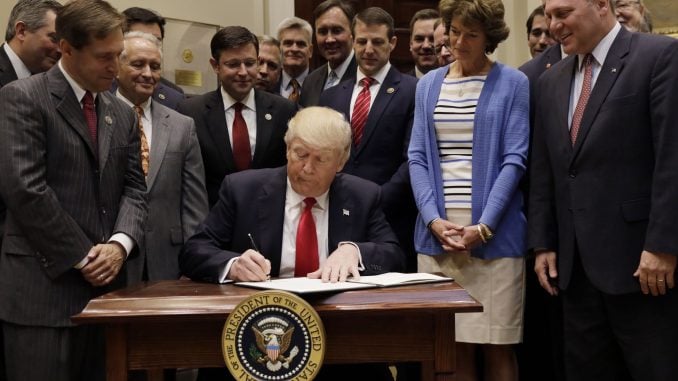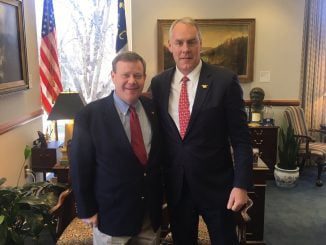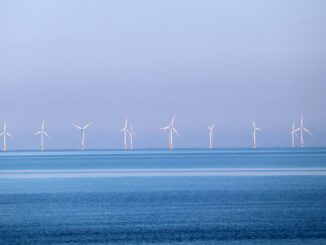
RALEIGH – The Trump administration’s plan to expand drilling in offshore waters is moving slowly due to opposition from coastal states, including N.C.’s Governor Roy Cooper. The Trump administration is working to encouraging U.S. energy development outside of shale oilfields to increase the nation’s “energy independence.” But existing Obama administration lease rules remain in place through 2022 unless the new rules gain approval.
The Department of the Interior this year proposed offering 47 lease sales, including areas that had not been offered since 1983, in the U.S. outer continental shelf to drilling. The public comment period on the proposal wrapped up March 9. So far, officials in Alaska, Maine, Georgia and U.S Gulf Coast states other than Florida have said they were open to expanding drilling. At least 12 states have sought exemptions, with California saying they would deny needed permits for onshore services or transport.
“You can’t bring energy ashore unless you have access to state waters,” said Secretary Ryan Zinke last week.
Zinke remains deep in discussions with state governors, some of whom have said that they will impede or bar drilling off their coasts. In a visit Wilmington last month Cooper told supporters he will file a lawsuit if N.C. is not granted a waiver from the plan. N.C. Attorney General Josh Stein has reportedly assembled a coalition of 12 attorneys general opposed to the offshore plan. Opponents say that the state’s tourism industry could suffer and they express concerns about the effects of seismic mapping on fisheries. Seismic mapping is a process that uses sound waves to map geographical surfaces. The same process is used for development of wind energy, identifying areas at risk for earthquakes and other study.
API Director of Upstream and Industry Operations Erik Milito, of American Petroleum Institute, the trade organization for the $1.3 trillion oil and natural gas industry, says that offshore oil operations have dramatically increased environmental protections over the last ten years.
“Advanced technology, safety standards, best practices, and regulations are designed to protect the environment, marine life, and workers – while enabling us to work alongside recreational fishing, tourism, and military activities,” Milito told media members in a conference call. “Since 2010, more than 100 standards were created or strengthened, including for improved safety and environmental management, well-design, blowout prevention, and spill response to ensure we have the best protections and highest safety measures in place. “
The planning phase of the five-year proposal wraps up in 2019, but any litigation or procedural hurdles could delay any drilling, even without waivers, indefinitely. Chevron Corp, which disclosed a large Gulf of Mexico oil discovery in existing lease areas earlier this year, said new areas will have to stack up against existing projects.
They “will have to compete with the other drilling we have in the world,” said Robert Ryan, Chevron’s vice president of global exploration. “We just don’t know, most of those areas haven’t been evaluated yet.”
U.S. oil production has soared in recent years as a result of advances in drilling technology, but the increase has occurred mainly on private, rather than federal, lands – cutting states out of the potential revenue.
An economic study out from API last week said that offshore energy exploration would bring about 56,000 jobs and $4 billion in economic impact in North Carolina. About half of those jobs in the study were indirect employment stemming from the industry; mainly retail, food service and healthcare. Royalties, bonuses and rent paid to the state government would also mean an additional $500 million a year to the state’s $22 billion annual budget.
“With more than 94 percent of the total acreage in federal offshore waters currently inaccessible, opening the Outer Continental Shelf (OCS) to safe and responsible offshore energy development could further advance our energy renaissance – including more higher-paying jobs, investments in local communities, additional state revenue for public education and infrastructure, and long-term energy self-sufficiency,” said Milito.
Still, opponents are pushing back. State’s control three miles off their coastline and state lawmakers in New Jersey, New York, California, South Carolina and Rhode Island have introduced bills that would prohibit infrastructure related to offshore drilling from crossing their state waters. In South Carolina, the bill is stuck in committee because lawmakers in support of the offshore energy plan say that the potential revenue is important to the state, and a “back-door ban” against infrastructure is excessive control by the state on the fee market.
Reuters News Service contributed to this report.



